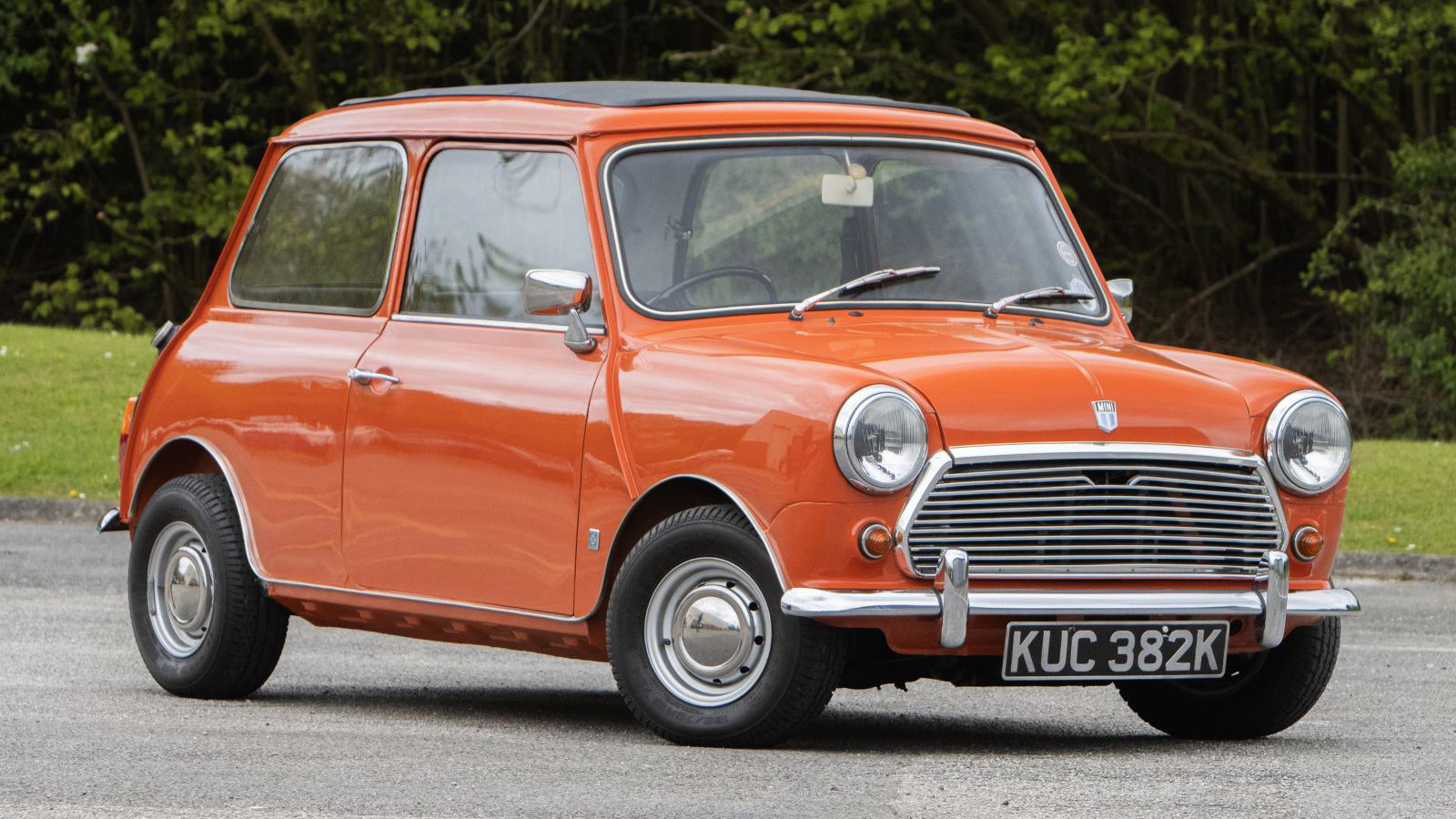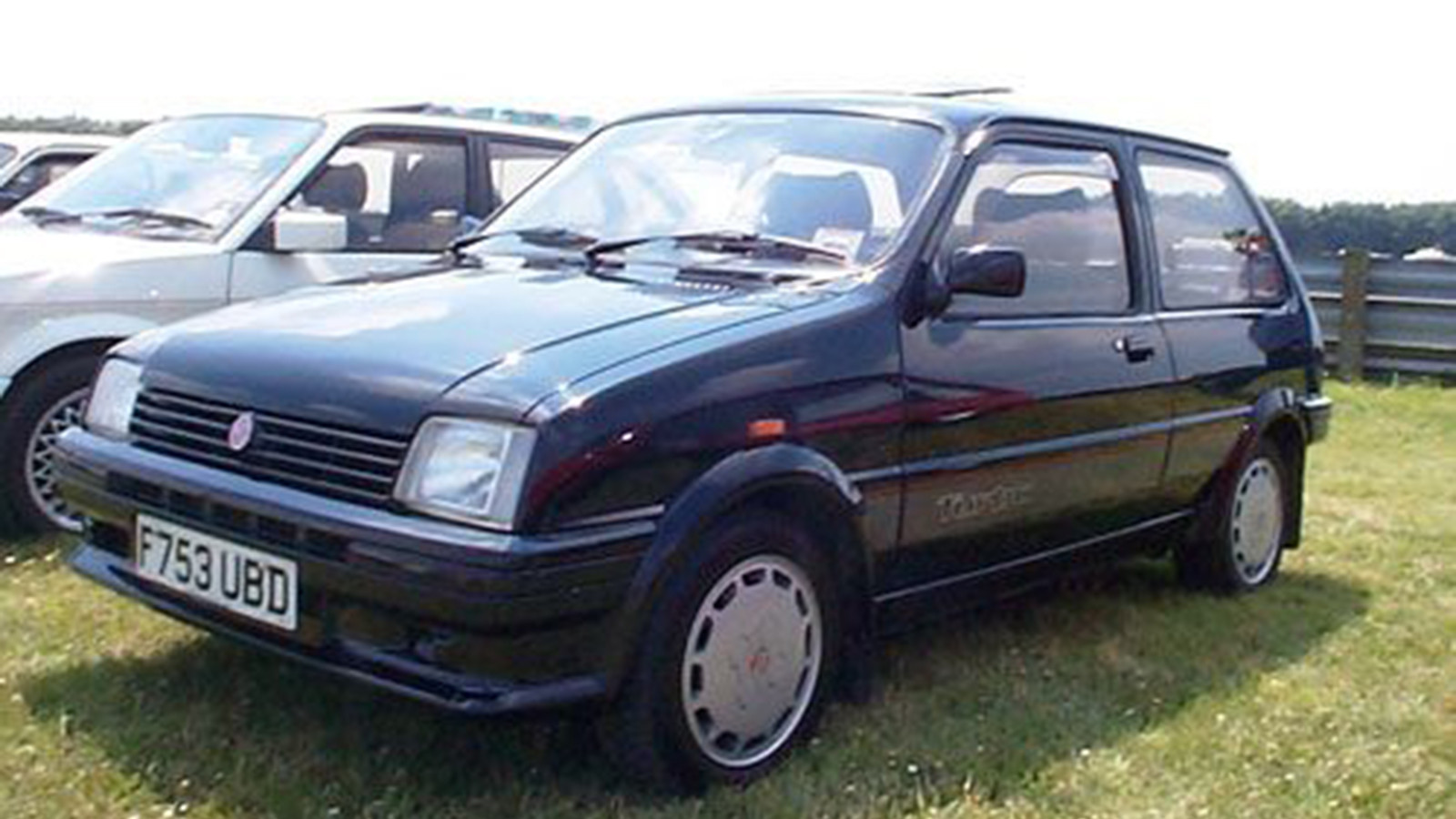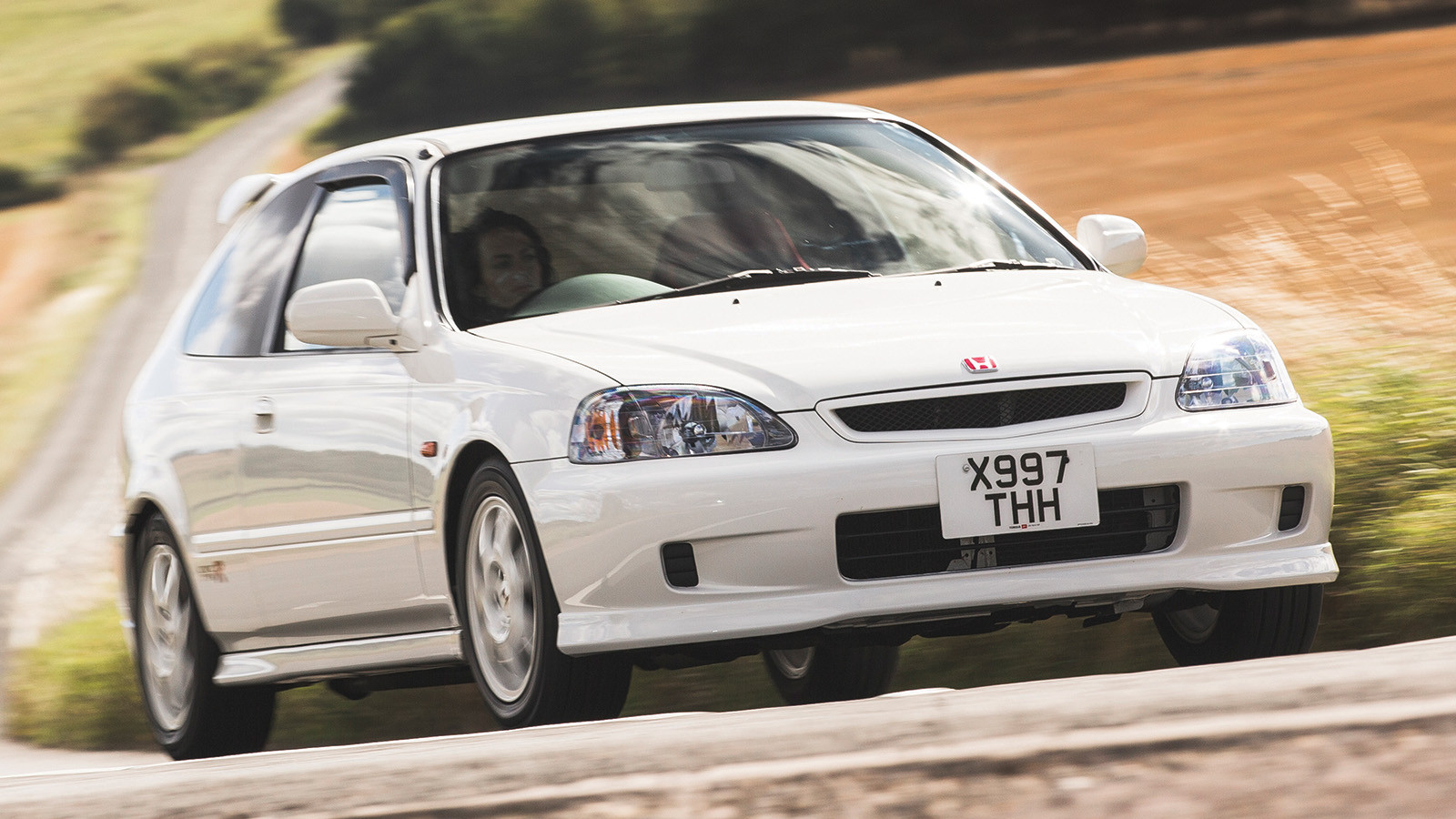-
 © Classic Car Auctions
© Classic Car Auctions -
 © Manor Park Classics
© Manor Park Classics -
 © Will Williams/Classic & Sports Car
© Will Williams/Classic & Sports Car -
 © Will Williams/Classic & Sports Car
© Will Williams/Classic & Sports Car -
 © FCA Heritage
© FCA Heritage -
 © Haymarket Archive
© Haymarket Archive -
 © Centro Storico Fiat
© Centro Storico Fiat -
 © Haymarket Archive
© Haymarket Archive -
 © James Mann/Classic & Sports Car
© James Mann/Classic & Sports Car -
 © Ford Motor Company
© Ford Motor Company -
 © MG Owners’ Club
© MG Owners’ Club -
 © Vauxhall Heritage
© Vauxhall Heritage -
 © Luc Lacey/Classic & Sports Car
© Luc Lacey/Classic & Sports Car -
 © Iconic Auctioneers
© Iconic Auctioneers -
 © Vauxhall Heritage
© Vauxhall Heritage -
 © MG Owners’ Club
© MG Owners’ Club -
 © Luc Lacey/Classic & Sports Car
© Luc Lacey/Classic & Sports Car -
 © Luc Lacey/Classic & Sports Car
© Luc Lacey/Classic & Sports Car -
 © Jack Harrison/Classic & Sports Car
© Jack Harrison/Classic & Sports Car -
 © Manor Park Classics
© Manor Park Classics -
 © Luc Lacey/Classic & Sports Car
© Luc Lacey/Classic & Sports Car -
 © Haymarket Archive
© Haymarket Archive -
 © Vauxhall Heritage
© Vauxhall Heritage
-
Bread and butter cars with a dose of sportiness
The bedrock product of any auto maker – the one that kept the factories ticking over, churning out identikit copies in huge numbers – was the one that became entrenched in the mainstream, providing dull but worthy service to commuters and families the world over.
Practical to a fault, economical, dependable, but (most of the time, anyway) bereft of any pizzazz, it was a vital component in any car manufacturer’s armory.
But wait: where was the aspiration? It didn’t take long for marketing teams to realize that the humble could be transformed into the epic by dint of the odd twin-choke carburetor, some chopped-down road springs or a go-faster graphic.
Suddenly, buyers were on a journey to the most potent (and pricey) offerings in the range. And here, in chronological order, are 22 of the best.
-
1. 1961 Morris Mini Cooper
The precursor to so many tuned commuter cars, the 1961 Morris Mini Cooper took the already revelatory Mini concept to a new level – and a new audience, thanks to its follow-on competition success.
John Cooper of the Cooper Car Co, famed for its mid-engined Formula One cars, was so entranced by the standard Mini, that he persuaded BMC’s MD George Harriman to build 1000 souped-up versions bearing Cooper’s name for the purposes of homologation.
A hotter cam, twin 1¼in SU carburetors and larger inlet valves boosted the 998cc A-series engine’s output, giving it a maximum speed of 85mph and a 0-60mph time of around 17 secs.
-
2. 1964 Renault 8 Gordini
Keen to give its R8 Major model a lift, Renault employed tuning ace Amédée Gordini to work his magic on the little car.
Gordini’s initial attempt resulted in the 1964 Renault 8 Gordini, with its 1.1-liter engine receiving a power boost.
But in 1966, Gordini succeeded in creating a far more radical second version. Painted in Blue Ciel with two white stripes running from nose to tail over the roof, the esthetics were completed with a four-Cibie light set, similar to its rally sibling’s.
Power was upped again, this time to 110HP, thanks to an increased 1.25-liter engine capacity.
-
3. 1967 NSU Prinz 1200 TT
Battling for rear-engined honors with Renault’s R8 Gordini was the NSU Prinz 1200 TT.
The 1200 TT had been preceded by the 1000 TT, which had already given the humble Prinz range a generous dose of performance, its lightweight, air-cooled aluminum overhead-cam ‘four’ engine’s output boosted to 54HP.
Like the 1000 TT, the 1200 TT was visually defined by twin round headlights and a lower stance – as well as a further lift in power to 65HP developed from a larger, 1177cc motor.
Production continued until 1972, by which time 49,327 1200 TTs had been built.
-
4. 1971 Fiat 128 Rally
The European Car of the Year-winning Fiat 128 had been released in 1970, and its maker was quick off the mark to enhance its appeal with a more potent derivative – the Rally.
Mechanically, its engine’s capacity was raised from 1116cc to 1290cc, and revised valve timing, a twin-choke Weber carburetor and higher compression ratio increased the output to 67HP.
All Rallys used the 128’s two-door shell, which was adorned with split bumpers and auxiliary driving lights at the front, and dual round tail-lights.
Inside, there was upgraded instrumentation, plus front sports seats with headrests.
-
5. 1976 Volkswagen Golf GTI Mk1
To many, the original hot hatch, VW’s first Golf GTI – standing for Grand Tourer Injection – started as a skunkworks project, driven by Wolfsburg’s press and engineering departments.
Using the Audi 80 GTE’s EA827 1588cc engine with Bosch K-Jetronic fuel injection, the 110HP GTI boosted the Golf’s sporting cred, with a 0-62mph time of 9.2 secs and a 113mph top speed.
Dynamically, the model sat 15mm lower than cooking Golfs, and rode on wider 175-section tires.
There was no mistaking the GTI, either: a deep front spoiler and resin wheelarch extensions were the main highlights, complemented inside by a dimpled ‘golf-ball’ gearknob and tartan-plaid upholstery.
Right-hand-drive UK sales started in 1979, and overall 462,000 Mk1 VW Golf GTIs were sold.
-
6. 1978 Fiat 127 Sport
Fiat’s original ‘pocket rocket’, the 127 Sport was introduced into the second-generation 127 range in 1978.
Powered by Fiat’s 1050cc ‘four’, output was increased thanks to an Abarth-tweaked cylinder head with larger valves, a twin-choke carburetor and an Abarth exhaust.
Visually, the Fiat 127 Sport came in either silver, orange or black, and wore a different front grille to complement its front spoiler and additional side trim.
The car’s suspension and brakes were also beefed up to cater for the improved performance.
-
7. 1978 Fiat 131 Mirafiori Sport
Another second-generation Fiat range to spawn a sporting model was the 131, with the Mirafiori Sport (called ‘Racing’ in Europe).
With added kudos off the back of Fiat’s competition success with the 131 Abarth Rally, the Sport certainly looked the part, its bespoke grille incorporating four headlights (the outers larger), spoilers front and rear, and mandatory wheelarch extensions.
Taking its 2-liter, double-overhead cam engine from the Supermirafiori model, mated to the same short-throw five-speed gearbox, the Sport could clip a top speed of 110mph.
-
8. 1980 Ford Escort XR3
With its first front-drive Escort new to the market, Ford Europe needed to inject some much-needed chutzpah to the range.
Keen to differentiate from the rear-wheel-drive RS-branded models, the Escort XR3 took its naming lead from the US market’s Mercury Cougar XR-7.
While the XR3 was never a serious dynamic/performance challenger to the Volkswagen Golf GTI, some eye-catching body addenda – that trunk spoiler, especially – compensated for its lackluster poke, amounting to just 97HP, after a twin-choke Weber carb had been added to its new CVH engine.
-
9. 1981 Ford Fiesta XR2
Ford Europe had already trialed a warmed-up Fiesta in the market in 1980, with the 1.3-liter Supersport.
The results were positive enough for something more daring a year later, with the introduction of the Ford Fiesta XR2.
Using the same basic Kent crossflow engine as the Supersport, but now displacing 1.6 liters, the XR2 became the doyen of boy (and girl) racers across Europe.
Black-plastic addenda inside and out visually set it apart from cooking models, as did 0-60mph acceleration of 9.3 secs and a top speed of 105mph.
-
10. 1982 MG Metro Turbo
MG traditionalists were already aghast that their beloved MGB had bitten the dust in 1980.
Adding insult to injury, the maker effectively replaced them with the MG Metro and MG Metro Turbo models two years later.
But the Metro Turbo was a proper job. Despite being compromised by having just four gears, its partly Lotus-modified A-series engine, boosted by a single Garrett T3 turbocharger, was reinforced with bespoke componentry.
It was laggy, but punchy, too, devouring the 0-60 sprint in 9.9 secs, and on to a top speed of 112mph.
Front and rear spoilers, unique-to-model 13in alloy wheels, and four-piston front brake calipers meant it would never be mistaken for a standard Metro.
-
11. 1983 Vauxhall Astra GTE Mk1
The 1983 Astra GTE marked Vauxhall’s first foray into the relatively new hot-hatch segment, which had been dominated by the VW Golf GTI since the late 1970s.
Based on the 1980 front-wheel-drive Astra, the GTE’s fuel-injected, naturally aspirated, 1.8-liter, four-cylinder engine produced 115HP.
Mated to a five-speed gearbox, it could achieve an 8.5-sec 0-60mph time on the way to a top speed of 115mph.
A lower ride height and wider, lower-profile tires joined sill extensions, a deeper front spoiler and additional rear spoiler for maximum visual impact.
-
12. 1985 Renault 5 GT Turbo
The turbocharging trend had taken hold by the mid-1980s, but had not yet been completely refined, with new performance hatches like Renault’s 5 GT Turbo combining plenty of boost with lots of lag.
Employing the company’s ageing pushrod Cléon engine, an air-cooled Garrett T2 turbocharger was added.
Obligatory side skirts spiced up the R5’s dowdy styling, and its chassis benefited from all-round disc brakes, quicker steering and around a 1.5in lower ride height.
Thanks to the 5’s already sylph-like 850KG (1874LB) weight, it could sprint to 60mph in just 7.5 secs.
-
13. 1986 Ford Sierra RS Cosworth
The three-door Ford Sierra, launched in 1982, became Ford’s unlikely conduit to Group A racing in Europe.
Cosworth was brought in as a partner to develop the model, which was powered by the tuning company’s modified 2-liter Pinto engine, with twin camshafts, a 16-valve cylinder head and a Garrett turbocharger, boosting output to 204HP in roadgoing form.
Performance was prodigious, the Cossie capable of 149mph flat-out, and accelerating to 60mph in 6.5 secs.
Only available in black, white or Moonstone Blue colors, 5545 were produced in less than a year to satisfy homologation, but these were easily outnumbered by subsequent derivatives, which were built until 1992.
-
14. 1987 Opel Corsa GSi/Vauxhall Nova GTE & GSi
Faced with so much competition, Opel and Vauxhall could hardly avoid warming up its humble Corsa (Nova in the UK) offering.
There had already been a 1.3-liter Sport, to homologate the model for the British Rally Championship, but for mainstream buyers it was the GSi/GTE, which was first seen at the 1987 Frankfurt motor show, that really put the Corsa/Nova in enthusiasts’ minds.
Equipped with a 1.6-liter ‘four’ with multi-point fuel injection, the engine was tweaked by Irmscher to produce 101HP, enough for a top speed of 116mph.
-
15. 1988 MG Maestro Turbo
Revealed at the Birmingham Motor Show, the MG Maestro Turbo was, at the time, the fastest roadgoing MG ever produced.
Equipped with a Garrett-turbocharged version of Rover’s 2-liter, overhead-cam ‘four’, the front-wheel-drive family hatch became an instant 152HP fire-breather, tire-smoking its way to 60mph in 6.7 secs, on to a top speed of 132mph.
Tickford backed this up by producing a boldly styled bodykit for the car, including chunkier front and rear bumpers, set off by large ‘Turbo’ graphics along the MG’s flanks.
-
16. 1988 Peugeot 205 Rallye
Despite taking umbrage at the banning of Group B-class cars in world rallying, Peugeot was back in ’88 to challenge the 1300cc class in Group A.
Needing to produce 5000 cars to satisfy homologation rules, it created the 205 Rallye, an ultra-lightweight (793KG/1748LB), pared-down version of the diminutive hatch, with most soundproofing and extraneous kit removed.
The Rallye’s 1.3-liter, all-aluminum overhead-cam ‘four’ gained a hotter cam and twin Weber 40 carburetors, bumping up power to 103HP at 6800rpm, and giving it a 9.4-sec 0-60mph time and a 118mph top speed.
Stiffer dampers and springs, brakes from the Peugeot 205 GTI, as well as rather lovely looking, white-painted, 13in steel wheels, completed the package.
-
17. 1993 Peugeot 106 Rallye
Using its 106 XSi model as a base, Peugeot dropped in the 1.3-liter version of its long-serving TU-series ‘four’ to homologate the 106 for the sub-1300cc Group A rally class.
It was fitted with a high-compression cylinder head, bespoke intake manifold and higher-lift camshaft – but also Magnetti Marelli fuel injection, versus the 205 Rallye’s twin 40s.
Basic suspension came from the XSi, but thicker anti-roll bars toughened everything up.
Like the 205 Rallye, white-painted steel rims and a wider, lower stance helped set it apart from regular 106s.
-
18. 1994 Subaru Impreza 2000 Turbo
Unlike most cars in this list, the Subaru Impreza 2000 Turbo (known from launch as the ‘WRX’ in its home market) was conceived as a regular, non-performance model that could evolve into a rally contender from day one.
Arriving in most European markets from 1994, the Impreza 2000 Turbo dealt the incumbent hot-hatch brigade a blow it wouldn’t forget.
Producing 211HP from its turbocharged, 2-liter, flat-four engine, the Impreza’s performance eclipsed them all, accelerating to 60mph in 5.8 secs, thanks in part to four-wheel-drive traction.
The Impreza was also a relative bargain: in the UK, one of its largest export markets, it sold as a sedan for just £17,499, with the sport wagon costing an extra £500.
-
19. 1997 Citroën Saxo VTR
Sharing the same underpinnings as the equally agile Peugeot 106, Citroën’s Saxo VTR may have played second fiddle to its more potent VTS sibling, but as an attainable ‘warm-hatch’ for insurance-sensitive young drivers it was a real boon.
Nonetheless, weighing a mere 935KG (2061LB), it was still entertainingly peppy, its eight-valve, 1.6-liter engine enough for a sub-10-sec 0-60mph sprint and a 120mph top speed.
Production of both VTR and VTS models finished in 2003.
-
20. 1997 Honda Civic Type R
Honda’s first Type R model was based on the sixth-generation Civic, and is one of the most radically transformed hot hatches on our list.
Non-essential equipment and sound-deadening material were removed to pare down weight.
In addition, the Honda Civic’s chassis was seam-welded for improved rigidity, and therefore superior handling.
The Type R’s engine was a jewel: a hand-ported, 1.6-liter, double-overhead camshaft VTEC, producing 185HP at a screaming 8200rpm – extraordinarily high for a naturally aspirated, four-cylinder engine of that capacity.
Delivering drive to the front wheels through a close-ratio five-speed ’box, the Type R could hit 140mph, and accelerate to 60mph in 6.7 secs.
-
21. 2000 Volkswagen Lupo GTI
Based on Volkswagen Group’s A00 platform – effectively, a shortened Polo chassis – the Lupo was ripe for a performance makeover, being compact, agile and lightweight.
Identifiable from more humble models by its body-colored bumpers, twin exhausts and ‘Bathurst’ 15in alloy wheels, the Lupo GTI was the only model in the range powered by VW’s double-overhead cam, 16-valve ‘four’.
More of a ‘warm hatch’, the VW Lupo had a top speed of 127mph and could accelerate from 0-60mph in 7.8 secs.
-
22. 2007 Opel Corsa OPC/Vauxhall Corsa VXR
By 2007, Opel and Vauxhall’s respective OPC and VXR sub-brands were well established, and helping inject some zest across product line-ups.
The Corsa OPC/VXR was the most popular, its turbocharged 1.6-liter engine giving a steroidal lift to performance, which promised a 0-60 time of 6.8 secs and top speed of 140mph.
It looked the part, too. Deeper bumpers, side skirts and a roof spoiler were almost mandatory in the class, as were shell-backed seats and a flat-bottomed steering wheel inside.
